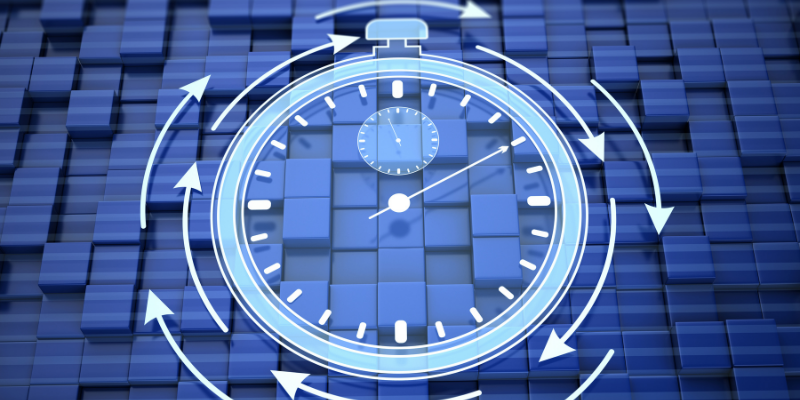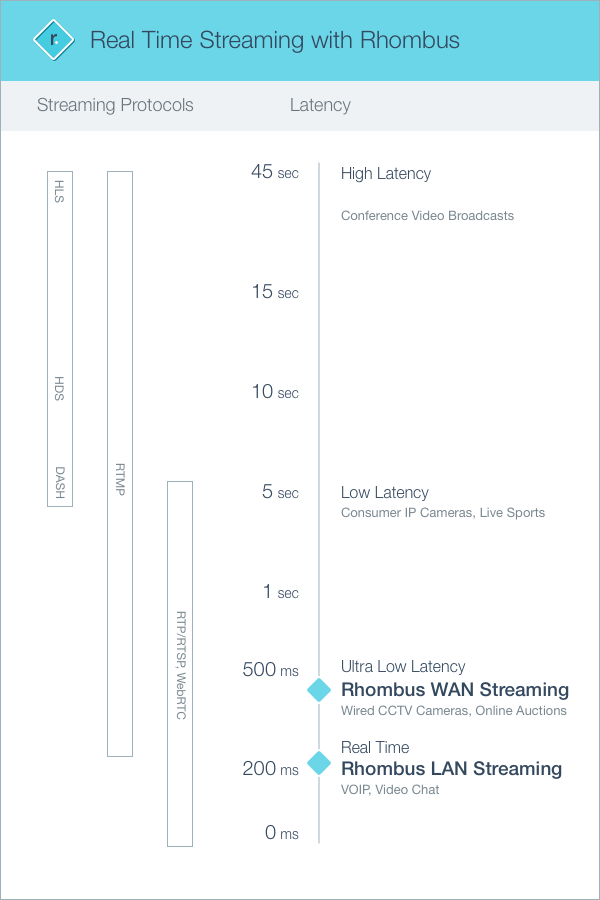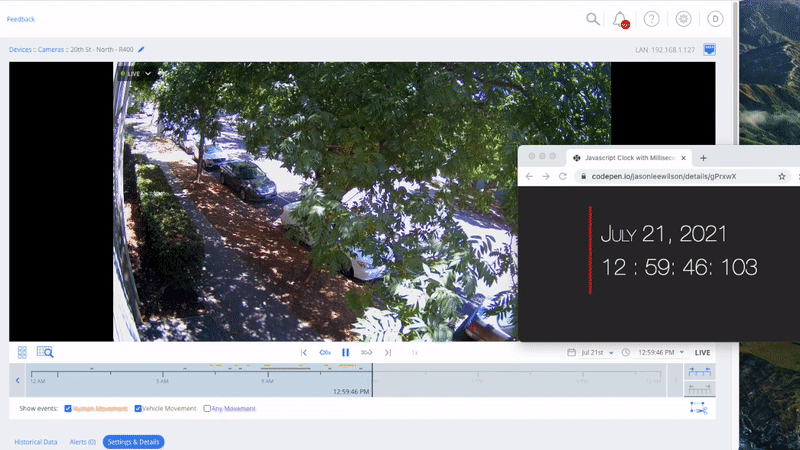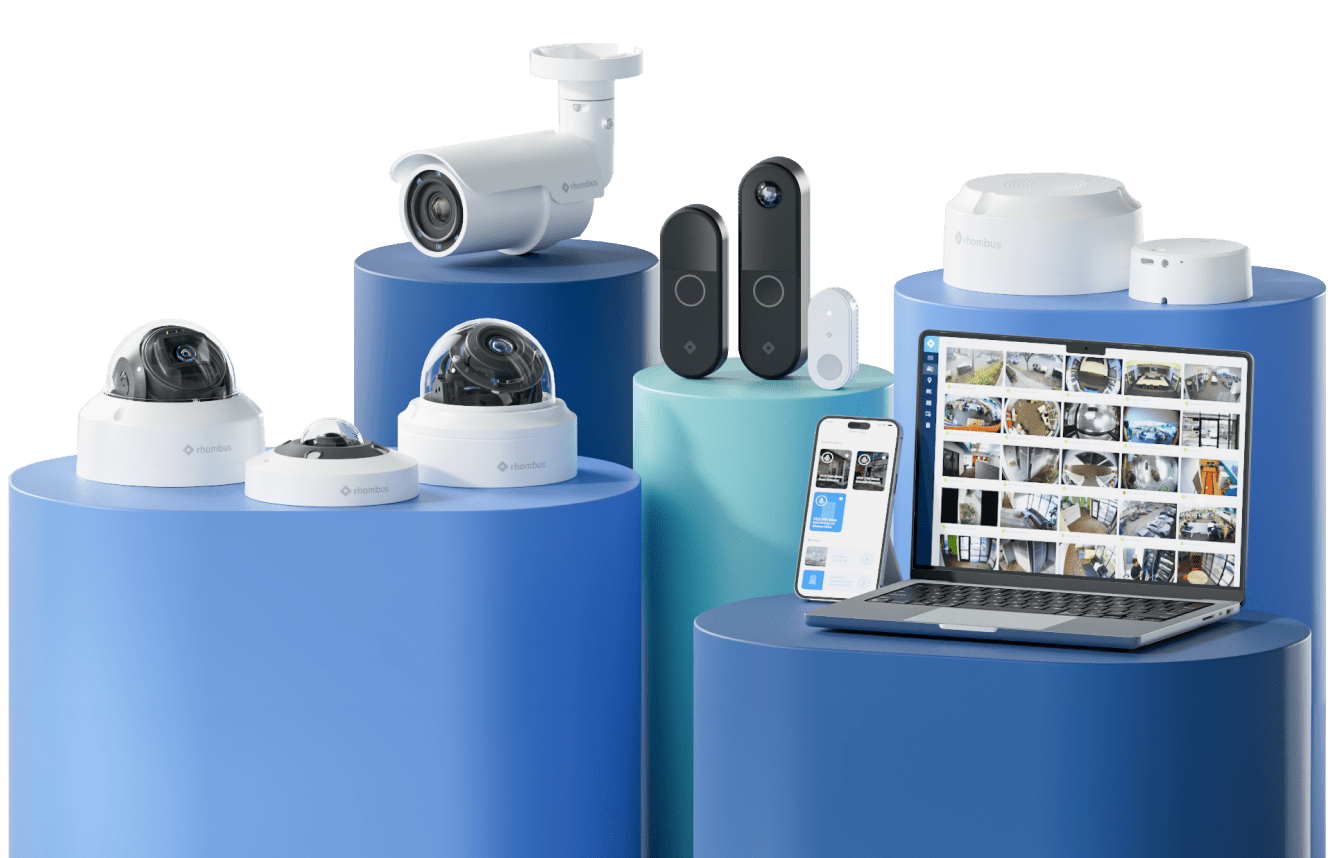
Guide to Ultra-Low Latency & Real-Time Video Streaming for IP Cameras
July 20, 2021

When it comes to video security, latency matters.
Organizations in every industry use video surveillance to make decisions that affect the safety of their facilities, employees, visitors, and more. If you use IP security cameras for live monitoring, it’s especially important that footage has low latency and it is as accurate and up to date as possible.
But what is considered ‘good’ or ‘bad’ latency when it comes to video surveillance? How does being in ‘the cloud’ affect it?
This post will explore the differences between low latency, ultra-low latency, and real-time streaming. We’ll talk about what you actually need for your video security system, what to know about LAN vs WAN, and how you can achieve real-time streaming with remote access.
What are low latency, ultra-low latency, and real-time streaming?
Streaming latency is the delay between a camera capturing an event and the event being displayed on the viewer’s device. The lower the latency, the faster and more “live” it is. The standards for what is considered low latency are in flux as technology continues to improve.
Low latency
Traditionally, “low latency” is anything faster than five seconds. HD cable has an average latency of five seconds, and this is typically good enough for viewing footage passively—such as for prerecorded TV programming and historical footage in a video security platform.
Innovations in technology now allow the latency to be brought down even more. This is incredibly helpful for interactive mediums or less-passive viewing, such as for two-way video chat and live security camera feeds.
Ultra-low latency
“Ultra-low latency” in a video streaming context is considered under one second, meaning there’s less than a second delay between an event happening and you seeing it remotely on your screen.
Real-time streaming (also called near-zero latency)
“Real-time streaming” happens so quickly, you can hardly perceive a delay at all. This typically requires a latency of around 200ms or less. Real-time streaming (also referred to as near-zero latency) is commonly used in video calls and VOIP.

When does latency matter for video security?
There are two main ways that organizations use video surveillance systems: for live security monitoring and for after-the-fact reporting and investigations. Latency is very important for the former and less so for the latter.
Keep in mind—almost all organizations use video security in both ways. This makes low latency an important part of any video security solution.
Viewing historical IP camera footage
Historical footage refers to all non-live video. In other words, footage of events that happened in the past. This includes many different functions, such as investigating incidents, creating a time-lapse, compiling reports, and more.
For viewing historical footage, you typically don’t need real-time or ultra-low latency streaming. Because you’re looking at old footage, a delay of a second or more will not make a difference in how you use the video and the information the footage provides.
Viewing live security footage
Latency does matter when you’re using video surveillance for live security purposes. In real-time security and safety contexts, the delay of a fraction of a second can make a difference in outcome and safety.
How latency affects emergency response
In emergencies, real-time streaming can help save lives.
Organizations can share video streams with first responders in crises, such as fires or active shooter situations. With access to live footage, officers and firefighters can navigate dangerous situations much more quickly and effectively—and the more real-time it is, the better.
For example, if a SWAT team has access to real-time live streams, they can pinpoint the offender’s exact location much more accurately and immediately rush to secure that location. But a person can move a lot in five or more seconds—if there’s a long video delay, the information is too old to act on. Officers must instead clear room by room, a much slower process.
In less extreme circumstances, security guards use real-time streaming to react more quickly and effectively to disturbances, conflicts, and potentially dangerous situations.
How latency dictates how quickly you receive security alerts
With modern cloud systems, you can set up custom security notifications and receive them remotely to any device via email, text, or mobile app. Live alerts enable you to receive immediate notification of potential and developing emergencies, so you can quickly understand what’s happening and take action.
The higher the latency, the longer it will take you to know when an event needs your attention. Lower latency allows you to receive security alerts in real-time, enabling security guards or other personnel to respond to urgent situations almost immediately.

Respond to urgent security events faster with real-time security alerts.
Can I get real-time streaming with remote access?
Remote access is one of the most common reasons organizations switch to cloud video security platforms. Remote access gives you the flexibility to manage your security cameras across multiple locations—from anywhere.
But when it comes to latency, can cloud solutions compete with traditional on-premise systems? Can you get ultra-low latency live streaming over remote access?
The answer is yes!
Remote live streaming vs on-premise live streaming
On-premise IP cameras typically have a live streaming latency of 300-400ms. As the name implies, this is limited to onsite access only.
Rhombus cloud IP cameras typically have a live streaming latency of 200-500ms with full remote access. With Rhombus, both LAN and WAN live streaming have less than one-second latency, meaning you can view live video with nearly zero lag from anywhere in the world.

Rhombus cameras provide sub-one-second latency—compare the current time vs. real-time feed to see it in action.
What should I know about LAN vs WAN live streaming?
If you want a video security system with remote access, it’s important to look at its performance on Local Area Networks (LAN) and Wide Area Networks (WAN).
Remote live streaming happens over both types of networks, but some cloud systems have a significant discrepancy between how their cameras perform on LAN vs WAN.
LAN is faster than WAN, so some cloud solutions that have decent latency on LAN are much slower on WAN. For example, a system may have a local live stream (LAN) latency of as low as 2-3 seconds, but a WAN latency of over 10 seconds.
When LAN is important
LAN is the private network that your IP security cameras are on. It’s limited to 100-1000 meters and you use it when you’re within range. If you plan to mostly access your video security from onsite, then LAN latency and performance are important for your organization.
Common use cases for LAN include onsite security guards who monitor camera feeds. They can view live video footage from a dedicated office or by using a mobile device while patrolling.
With Rhombus, you can even use the LAN to access your camera feeds if the internet is out by using the mobile app.
When WAN is important
WAN is a larger network that covers up to 100,000 kilometers. If you plan to access your video security system from offsite, then WAN latency and performance are important for your organization.
Organizations with security cameras in multiple geographical locations will typically want high performance and low latency over WAN. For example, this is an important function for companies that manage offices in multiple states from a central headquarter.
Both LAN and WAN live streaming fall under the umbrella of "remote access", but the latencies for each may be very different even under the same camera provider. Make sure that the system you choose will meet your needs on all fronts.
Takeaways
If you use IP security cameras for live monitoring, low latency is an important tool for protecting your organization.
While traditional latencies of five seconds or more are fine for viewing historical footage, ultra-low latency and real-time streaming are key to protecting your spaces and achieving accurate, up-to-date information.
Cloud IP cameras with remote access are a powerful choice for video security and can deliver latencies that are comparable to on-premise solutions. Be sure to check both the LAN and WAN latencies to ensure that all your needs are met.
If you’re considering a new video security solution, Rhombus currently provides the best latency and streaming performance in the industry. To find out if Rhombus is right for you, reach out to sales@rhombussystems.com to request a demo or a free trial.

Try Rhombus for Free!
See why school districts, cities, and Fortune 500 companies use Rhombus.
Start Trial

